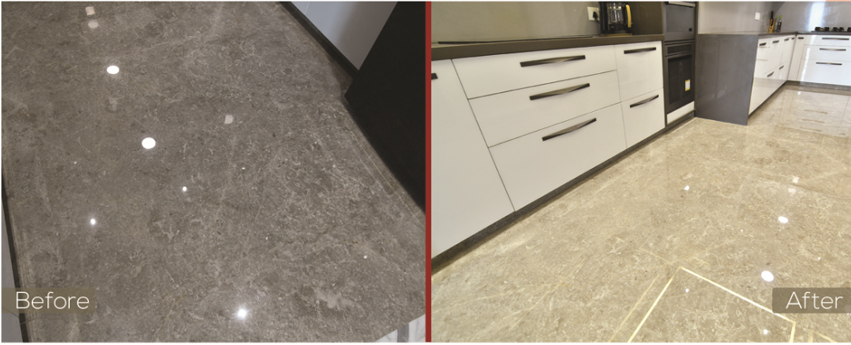The art of stone restoration is an art that not only protects the charm of historical structures but also boosts the value of our homes. With the growing awareness of eco-friendly methods and the significance of maintaining our history, many residents are venturing into the realm of stone restoration. Whether a crumbling facade, a tattered patio, or complex interior stonework, rehabilitating these surfaces can breathe new life into our living spaces while keeping their authentic charm.
However, diving into the task of stone restoration can be overwhelming without the right guidance. From identifying when it’s time to restore your stone surfaces to understanding the common pitfalls to avoid, this ultimate guide aims to prepare you with the information you need. We’ll cover key topics such as the best practices for caring for your stone surfaces, the skill of protecting historic stone, and whether to opt for DIY methods or bring in professionals. Unlocking the capabilities of your stone surfaces has never been simpler, and it all starts with understanding the skill of restoration.
Typical Errors in Stone Restoration
One of the most common errors in rock refurbishment is neglecting to evaluate the kind of stone being restored. Various rocks have unique properties that impact their longevity and maintenance needs. For instance, chalkstone is more absorbent than quartz and demands varied cleaning and sealing methods. Failing to identify the type of stone can lead to using wrong cleaning products or methods, in the end causing additional damage than good. To avoid this, take the time to study and comprehend the specific characteristics of your rock surfaces.
Another common error is excessive cleaning. Many people mistakenly believe that intensive scrubbing or using toxins will yield better results. However, this frequently leads to deterioration of the surface, etching, or discoloration. Soft cleaning solutions and approaches should be emphasized to preserve the integrity of the stone quality. Consistent maintenance with proper products is vital, as it helps keep the stone looking its optimal while reducing the need for extensive restoration work.
Lastly, inadequate sealing is a misstep that can substantially impact the longevity of restored rock surfaces. Some homeowners apply sealants without properly cleaning the rock first or choose sealants that are not compatible for the particular stone type. This error can lead to trapped dirt and moisture, resulting in stains or deterioration over time. It is essential to thoroughly clean and dry the stone before sealing, using a product that matches the stone's specific characteristics. Taking these actions will ensure that your restoration work are efficient and durable.
Essential Techniques for Natural Stone Maintenance
One of the key aspects of stone maintenance is regular cleaning. Depending on who handles commercial marble polishing in sydney of stone, using the correct cleaning agents is crucial to avoid damage. For natural stones like slate, a mild pH-balanced cleaner is often ideal. Avoid harsh chemicals as they can erode the stone’s finish. Using a non-abrasive cloth or mop ensures that you don’t scratch the surface, while routine cleaning can prevent the buildup of dust and grime that reduces the stone's natural beauty.
Protecting the stone is a vital technique to consider in your maintenance routine. Sealing helps to protect the stone from marks and moisture, which can lead to deterioration over time. Depending on the type of stone, the interval of sealing can vary. For instance, porous stones such as limestone may require more frequent sealing compared to denser materials like quartz. Regular inspections can help you determine when it’s time to reapply the sealant, ensuring your stone surfaces remain in excellent condition.
Finally, addressing tiny repairs promptly can save you from bigger issues down the line. This includes fixing chips, cracks, or scratches with proper stone filler. Taking immediate action prevents further damage and maintains the aesthetic appeal of your stone surfaces. Additionally, working with professionals for more significant repairs can help you avoid mistakes that could compromise the integrity of the stone. By incorporating these techniques into your maintenance routine, you can ensure your stone surfaces remain gorgeous and durable for years to come.
The Importance of Structural Soundness in Renovation
As undertaking stone renovation, ensuring the strength of the materials involved is vital. Stone surfaces often act as integral components of a structure's stability, particularly in historic structures. All restoration projects must emphasize the assessment of the stone's present state, spotting any defects or issues that may endanger the structure's integrity. Ignoring this aspect can lead to further damage, causing additional and costly repairs down the line.
Alongside maintaining the physical safety of the building, ensuring structural integrity also plays a vital role in the appearance of stone restoration. Properly restored stone not only has an attractive look but also improves the overall ambiance of a vintage building. Ensuring that the authentic traits of the stone are retained while bolstering its strength can considerably add to the building's cultural significance. Restoration professionals must be aware about the distinct characteristics of the stone types they use and select the appropriate techniques and materials to preserve both performance and design.

At the end of the day, preserving structural integrity while stone restoration is not just about the immediate results; it is about the enduring stability of the building. A well-renovated stone surface can resist environmental factors and everyday wear, ensuring its durability for future generations. As we engage in restoration projects, we must dedicate ourselves to methodologies that maintain the foundational integrity of our properties, allowing us to honor the past while ensuring the years ahead.
